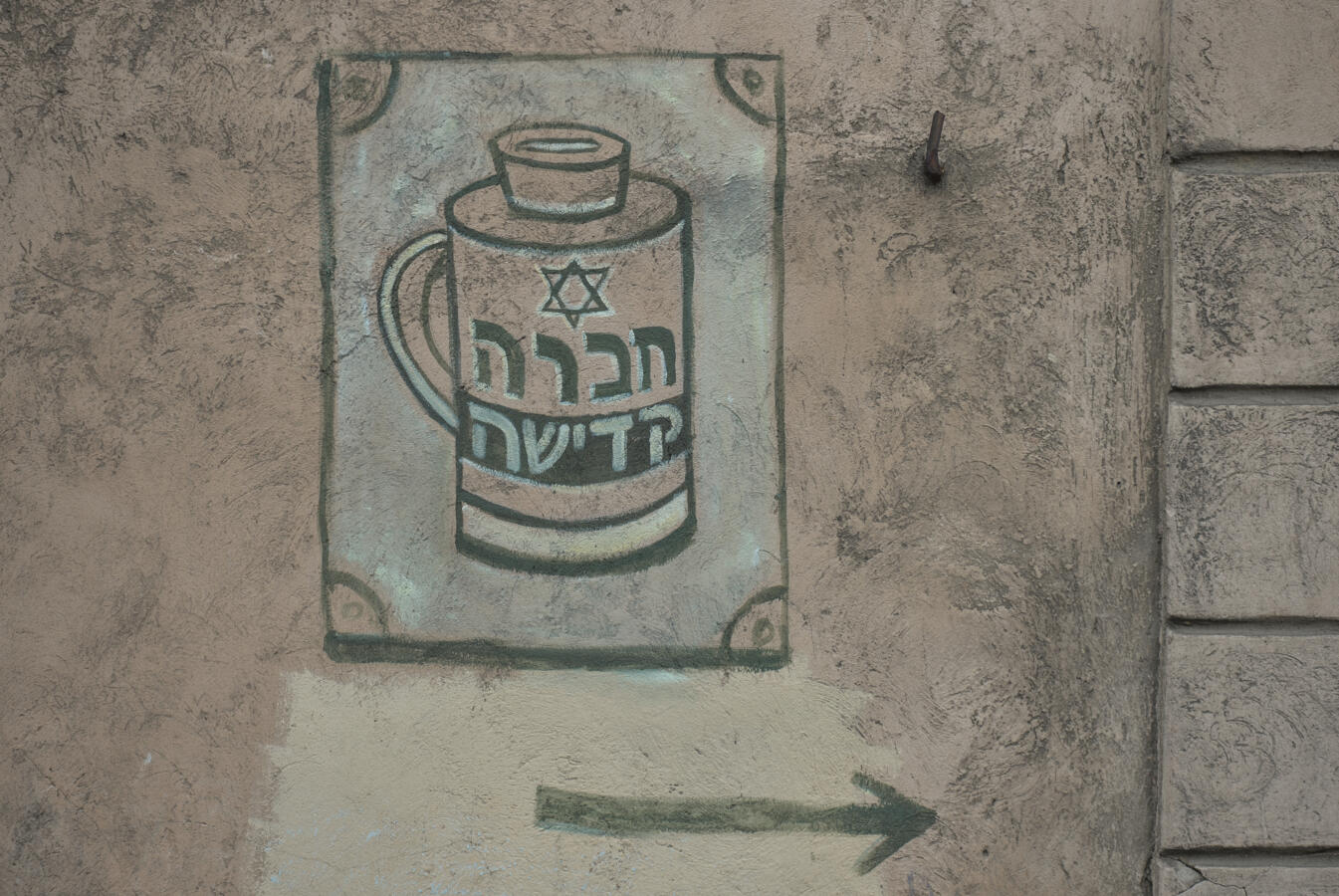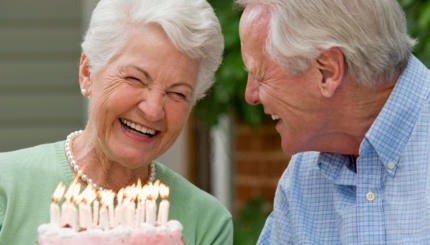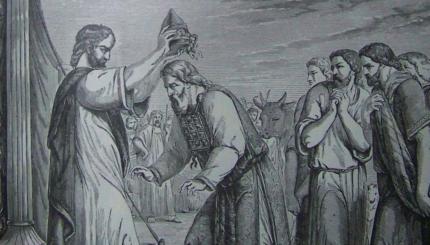Reprinted with permission from Sh’ma magazine.
I remember from my childhood days in a small German Jewish community that the hevra kaddisha–literally, “holy fellowship”; in fact, the Jewish burial society–was looked upon with great respect and admiration. Even as children we were conscious of the sense of dedication that was needed to overcome inconvenience and squeamishness to carry out the tasks of the hevra at short notice and at any hour. It was considered a great honor to be asked to join this group. Their work was strictly l’shem [for the sake of the mitzvah–commandment–itself], that is to say, without any remuneration.
I was asked to join the Riverdale Chevra Kadisha [which transliterates the term hevra kaddisha differently in its name] the year that my father died. I had mixed feelings about joining, probably because of our fresh personal loss and the three years of sickness that preceded it. (These had been hard years. Following our move into a new community that was rapidly growing and changing, my father fractured his hip. The ensuing years were those of a steady decline in health, which at the age of 89, ended in death).
Then I considered several factors. Traditionally there is a men’s hevra that takes care of men that have passed away. There was a men’s hevra in our congregation. A ladies’ group was just starting to form. While the men were already actively involved, the ladies were all novices. The exception was one who was several years our senior and had been involved in hevra work in Chicago before she came to Riverdale. She was the moving force, and became the chairperson of the women’s hevra.

Help us keep Jewish knowledge accessible to millions of people around the world.
Your donation to My Jewish Learning fuels endless journeys of Jewish discovery. With your help, My Jewish Learning can continue to provide nonstop opportunities for learning, connection and growth.
I Didn’t Want to Become Hardened to the Dead
Up until then, in the absence of a ladies’ hevra of members, our congregation had been forced to call upon a group of women from Williamsburg who do this kind of work regularly for a livelihood. These were committed women, but they were hardened by the daily exposure. We all felt that the first law of the hevra is to treat the dead with the same tenderness as though they were alive.
This was not so with the Williamsburg professionals. Even though at the end of the Taharah, the ritual purification of the body, they begged mekhilah (forgiveness) from the deceased for any indignities unwittingly committed [as is traditional], we felt that this was not good enough. Several months later, after our own hevra had been formed, I had an occasion to work with this Williamsburg group. It was on erev Pesach (Passover eve) and most of our regular members were away. The chairman of the men’s group called me and asked me to join the Williamsburg group so that at least one member of our hevra would be represented. The experience confirmed everything that had been told to us previously. While I respected them and recognized their dedication, I would not want to be exposed to this “professional” attitude often for fear that it would rub off on me.
Continuing in the Footsteps of a Dedicated Mother
I remembered that my mother had been an active member of the hevra kaddisha at the time when I was a teenager. I had always admired her capability to do this sort of work. My father had been a prominent pediatrician and consequently my mother had lived a life of the upper class in a lovely home with servants. Yet she answered every call with unpretentious dedication, happy to do the work of a hevra-member for the sake of the mitzvah. I was now at that same age at which I remembered my mother’s activities.
In order to live a full life, I felt that it was important to expose myself to this mitzvah. It is part of the cycle of human life, just as old age, and sickness, and failing health in old age are part of life. The end of life is also part of life; if you try to shut it out you have lived less fully. If, however, you have the inner strength to participate in it, you will encounter new experiences by which you will grow and be enriched.
The soul should not be denied sorrow, for it gives us understanding and compassion. It adds a dimension to our understanding of the human condition, and gives us scope and perspective. We learn to appreciate our blessings. The hevra experience provides us with contrast. Once you are exposed to it you can no longer take for granted life, good health and the absence of physical suffering. Thus we are taught to see things in better proportion. So I decided to become an active member.
Each Taharah is Suffering, but the First was a Lesson
My first taharah [“purification,” or preparing the body] was a young girl. I remember clearly thinking that this was unfair. My first experience with this mitzvah should have been an aged person who had lived out a full life, where death would come at a more easily acceptable time. But at the same time I realized that this was not realistic thinking, because in this game one cannot choose. Again I felt that if I would decline on the grounds that it was to be my first encounter with a corpse and that I was not ready to meet with a young girl, snatched away in her prime and deformed by years of illness, I would rob myself of an experience that would touch me and maybe in some way add some dimension to my life now or later.
So I went. Maybe in the back of my mind I had a feeling that it would equip me better to face possible future shocks from which no human being is ever completely spared. Yet I remember that on the way home from this taharah somewhat depressed (though at the same time with the satisfaction that I had had my start in the hevra), I had grave doubts as to whether one can ever become hardened or reconciled to such suffering.
Since this first tragic taharah, I have been called whenever the hevra was needed. Each time, before the actual taharah, the body is lifted off the bed onto a wooden board (“Abheben”). The taharah–nowadays usually performed in a specially equipped room in the funeral parlor–consists essentially of carefully cleaning the body, including trimming nails and combing hair. This is followed by a ceremonial purification with nine measures of water. Finally the body is carefully dried, clothed in white linen garments and placed in the casket. A bag with earth from the land of Israel is placed under the head. The details are governed by halakha [Jewish law] and by customs which may vary slightly in different communities.
One Needs a Special Sensitivity and Respect for Life
A good number of our hevra members are young women, some with very young children. Members are expected to maintain absolute secrecy about everything they see and hear at a taharah, so as to ensure complete privacy and confidentiality for the deceased. The family usually does not even know which members of the hevra were involved in the taharah of their beloved departed one. In some rare cases the family requests the names, so as to be able to express personally their gratitude to each member that extended herself to give the last act of kindness to their dear ones.
Once a year, on the yahrzeit [the anniversary of the death] of Rabbenu [“Moses our teacher”–the biblical Moses], the seventh day of the month of Adar, we (like most hevra kaddishas all over the world) get together for an annual gathering. The men make a siyyum of the (a ceremonial conclusion of the study of a tractate), which is followed by a festive meal, a s’eudah shel mitzvah, in which both men and women of the hevra participate. The chairpersons make a brief speech, reporting on the state and the membership of the hevra.
We are always happy if we have not had to meet many times in the line of duty. With such a group, the traditional wish, “Let’s meet in simchas!”[on happy occasions] becomes deeply meaningful. But as long as there is human life, a proud and devoted hevra should be a part of every vibrant Jewish community.
Sign up for a Journey Through Grief & Mourning: Whether you have lost a loved one recently or just want to learn the basics of Jewish mourning rituals, this 8-part email series will guide you through everything you need to know and help you feel supported and comforted at a difficult time.
Looking for a way to say Mourner’s Kaddish in a minyan? My Jewish Learning’s daily online minyan gives mourners and others an opportunity to say Kaddish in community and learn from leading rabbis.



